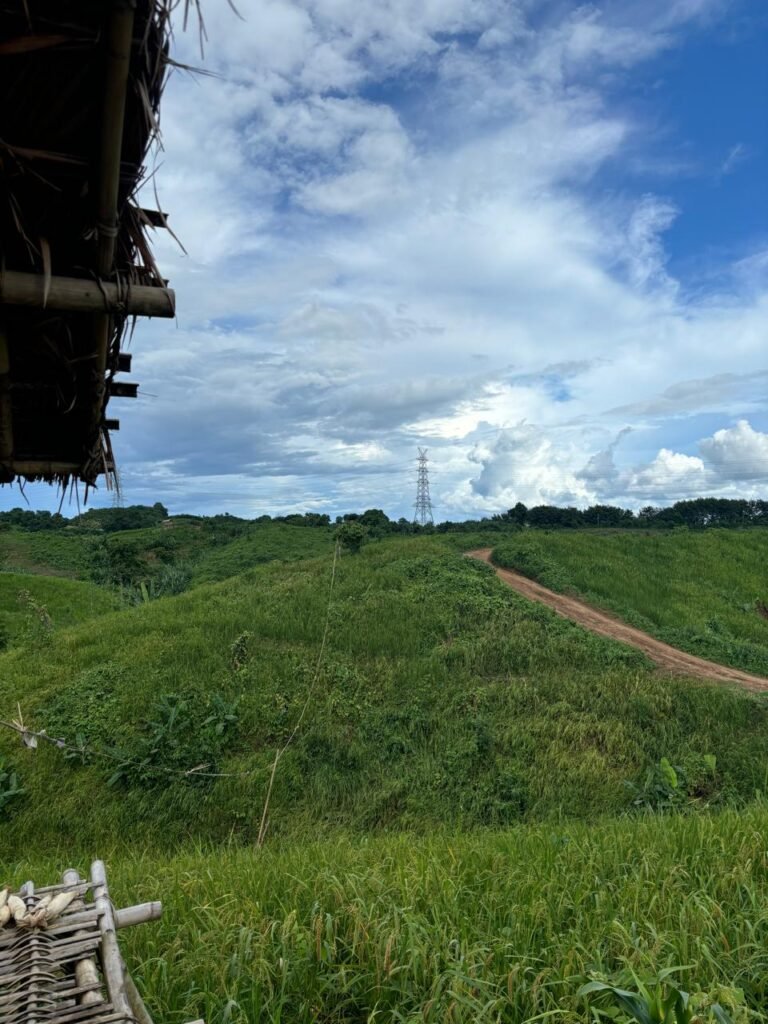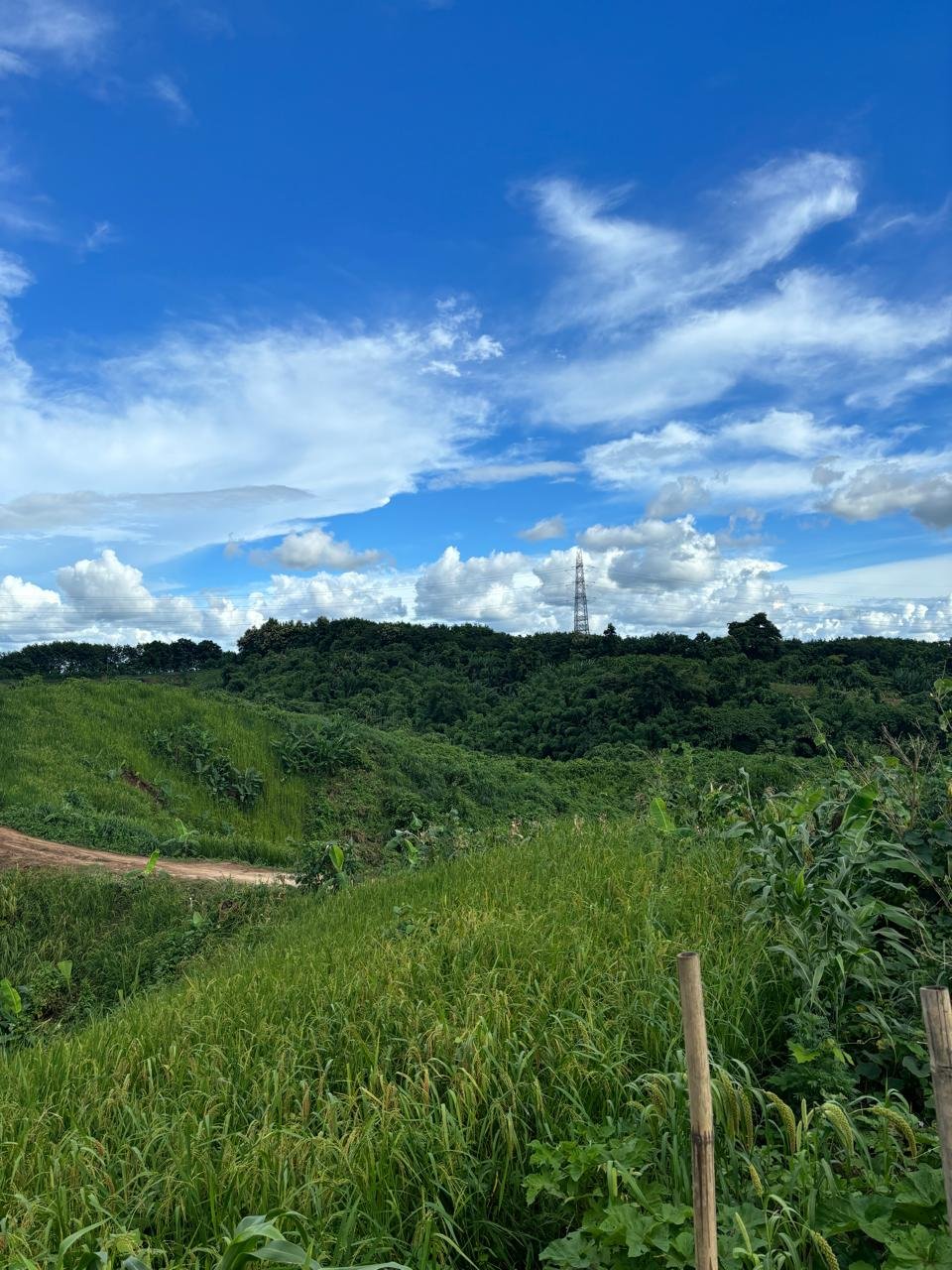
Explore North East India, Jhum Cultivation
Explore North East India, the Jhum cultivation, also known as shifting cultivation, is an indigenous farming practice that holds deep significant in the rural landscape of northeastern India. This age-old method involves clearing a part of the forest, burning the vegetation to add nutrients to the soil, and then cultivating it for a few years. Once the soil loses its fertility, the farmers move to a different patch of land, allowing the previous one to regenerate naturally over time.
Located approximately 52 kilometers from Agartala, the capital of Tripura, lies the quaint village of Sakhimura Para in Mandwi. Sakhimura Para is a beacon of cultural and agricultural heritage, embodying the essence of traditiona. Lifestyles that have largely remained untouched by modern farming techniques. The village is a fascinating blend of serene natural landscapes and rich cultural practices, where each farming season brings with it an air of anticipation and communal effort.
A Rural Village
Sakhimura Para’s dedication to Jhum cultivation makes it a vital part of Tripura’s agricultural tapestry. The villagers depend on the crop cycles for their livelihood, growing staples such as rice, millet, and vegetables using the shifting cultivation technique. This harmonious relationship between the land and its people is a testament to the sustainability of traditional farming methods that have stood the test of time.
In this blog post, we will delve deeper into a day in the life of Jhum cultivators. In Sakhimura Para, exploring the intricate details of their daily routines, the challenges they face, and the undeniable tranquility that embodies their existence. Through this journey, we aim to provide a glimpse into a way of life that remains steadfast in its simplicity and resilience, offering valuable insights into the interwoven fabric of culture and agriculture.
The Journey
The journey from the bustling city of Agartala to the serene retreat of Sakhimura Para is an adventure in itself, spanning approximately 52 kilometers. As you leave behind the urban environment, lush greenery envelops the landscape, painting a picture of natural splendor. The initial phase of the drive introduces you to gently curving roads flanked by tall trees and vibrant foliage, gradually transitioning into more undulating terrain. Hints of the hilly region that characterizes Mandwi become increasingly prominent.
As the journey progresses, traditional homes, representative of the local culture, come into view. These settlements, with their thatched roofs and bamboo walls, harmonize seamlessly with the surrounding natural beauty. Each village passed along the way offers a glimpse into a lifestyle that is both simple and deeply rooted in tradition. The warm, welcoming atmosphere of these rural communities is palpable, even as you traverse the pathways between them.
The drive itself is a sensory delight. The air grows fresher the further you venture from the city, carrying with it the subtle fragrances of wildflowers and earth. Occasionally, the road meanders alongside clear streams, their gentle murmur adding a peaceful soundtrack to the journey. Birds of various hues flit across the sky, and if you’re fortunate, you might even spot local wildlife making a casual appearance.
As you approach Sakhimura Para, the landscape transforms in earnest. Rolling hills give way to more secluded, tranquil vistas, surrounded by dense vegetation. The transition from the pace of city life to the slower, more deliberate rhythm of rural living becomes increasingly evident. The final stretch of the drive is particularly enchanting, as the road narrows and twists through a canopy of ancient trees, setting the stage for the tranquility that awaits.
A Day in Jhum Cultivation
Immersing oneself in a day of Jhum cultivation at Sakhimura Para, Tripura offers a window into an age-old agricultural tradition that harmonizes with nature. The day begins early, as the villagers congregate at the fields just after dawn. The initial step of Jhum, ‘slash-and-burn,’ involves clearing an area of jungle for agriculture. This ritualistic practice is labor-intensive, requiring meticulous coordination among farmers to clear the land efficiently while respecting its ecological balance.
Once the land is cleared, usually by mid-morning, the community takes a brief respite. It is a time for bonding, sharing stories, and fortifying themselves with local delicacies before the next phase, which involves scattering seeds. Unlike conventional farming, Jhum cultivation employs a unique method of planting where seeds of various crops—such as rice, millet, and beans—are simultaneously sown. This polyculture approach fosters a symbiotic relationship among the plants, enriching soil fertility and deterring pests naturally.
A charming Day
The midday sun brings with it a critical task—maintaining the crops. The local farmers navigate the inclines with remarkable agility, weeding and tending to the young plants. Their intimate knowledge of the terrain and weather patterns dictates their strategies, which are handed down through generations. The landscape transforms into an intricate mosaic of green, speaking volumes of their dedication and expertise.
Afternoons are often interspersed with songs and folklore, providing both entertainment and a cultural tapestry that enriches the experience. For those unaccustomed to such a heartfelt bond with the land, participating in these activities alongside the villagers is profoundly humbling. Gathering at dusk after a day’s diligent labor, the communal spirit is palpable. Each member, regardless of age or gender, has contributed to the collective effort, underscoring the essence of interdependence.
The experience is more than a practical learning of Jhum cultivation. It is an immersion into a community that thrives on mutual respect, hard work. Also a deep connection to their environment. A day in the Jhum fields of Sakhimura Para does not merely illustrate agriculture. Also it conveys an enduring lifestyle rooted in harmony and resilience.
The Serene Landscape and Natural Beauty

Explore North East India. The Jhum cultivation fields of Sakhimura Para in Mandwi Tripura, nestled among gently rolling hills and dense forests. It’s offering an exquisite tapestry of natural beauty. The landscape opens up to reveal expansive vistas where earth meets sky in a harmonious blend of greens and blues. The undulating terrain is adorned with swathes of lush vegetation, providing a serene backdrop that is both breathtaking and humbling.
One cannot help but marvel at the sheer diversity of flora and fauna that exists in this idyllic setting. Towering trees with thick canopies create a cool, shaded atmosphere, while the underbrush is dotted with myriad plant species. These forests serve as home to various birds and animals, add an element of liveliness to the otherwise tranquil environment.
Explore north east india, Sakhimura Para is further accentuated by the gentle, warm winds that sweep through the fields. These breezes carry with them the crisp, earthy scents of freshly tilled soil. Also blooming wildflowers, providing a sensory experience that is both soothing and invigorating. The natural sounds of rustling leaves, chirping birds, and the distant overall sense of calm and relaxation.
This verdant haven is more than just a picturesque landscape. Itis a sanctuary that offers an escape from the frenetic pace of urban life. The tranquility of the environment allows one to reconnect with nature, making it an ideal location for respite and rejuvenation. The stunning natural beauty and serene atmosphere of the Jhum cultivation fields create an immersive experience. It’s lingers in the memory, providing a much-needed haven of peace and enjoyment.

Leave a Reply